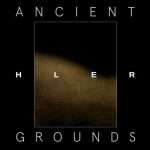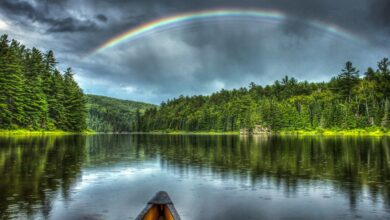Searching for Black-backed Woodpeckers After the Burn
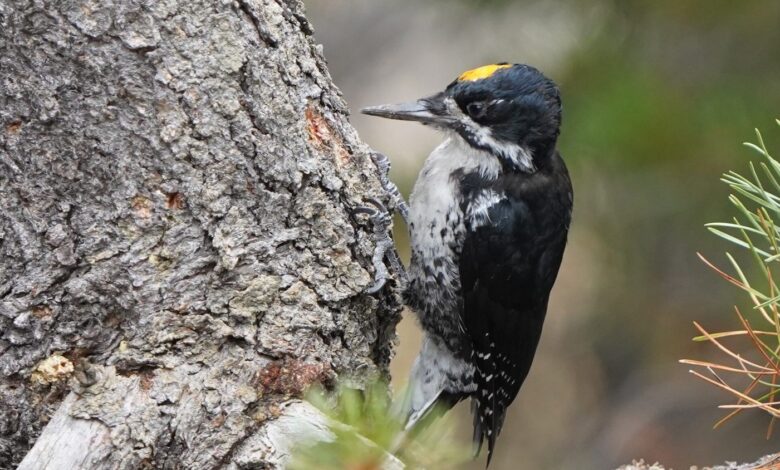
I’ve loved the sounds of woodpeckers hammering trees since I was a kid roaming the woods of central Pennsylvania. I learned to follow the rapid rat-tat-tat to the source, watching the wood chips fly as the bird excavated the tree.
Lately, I’ve been seeking out the different woodpecker species found in the expansive forests of Idaho. When I saw reports that black-backed woodpeckers could be reliably seen in a forest patch a few miles from my home, I grabbed the binoculars and headed out. This was a species I hadn’t spotted yet, and it always seemed difficult to pinpoint reliable locations.
While black-backed woodpeckers occupy a broad range across the northern part of North America, my home (in Boise, Idaho) lies a bit to the south of their usual haunts.
The reason they were showing up reveals the fascinating life history of this bird and gave me a chance to observe another woodpecker in action.
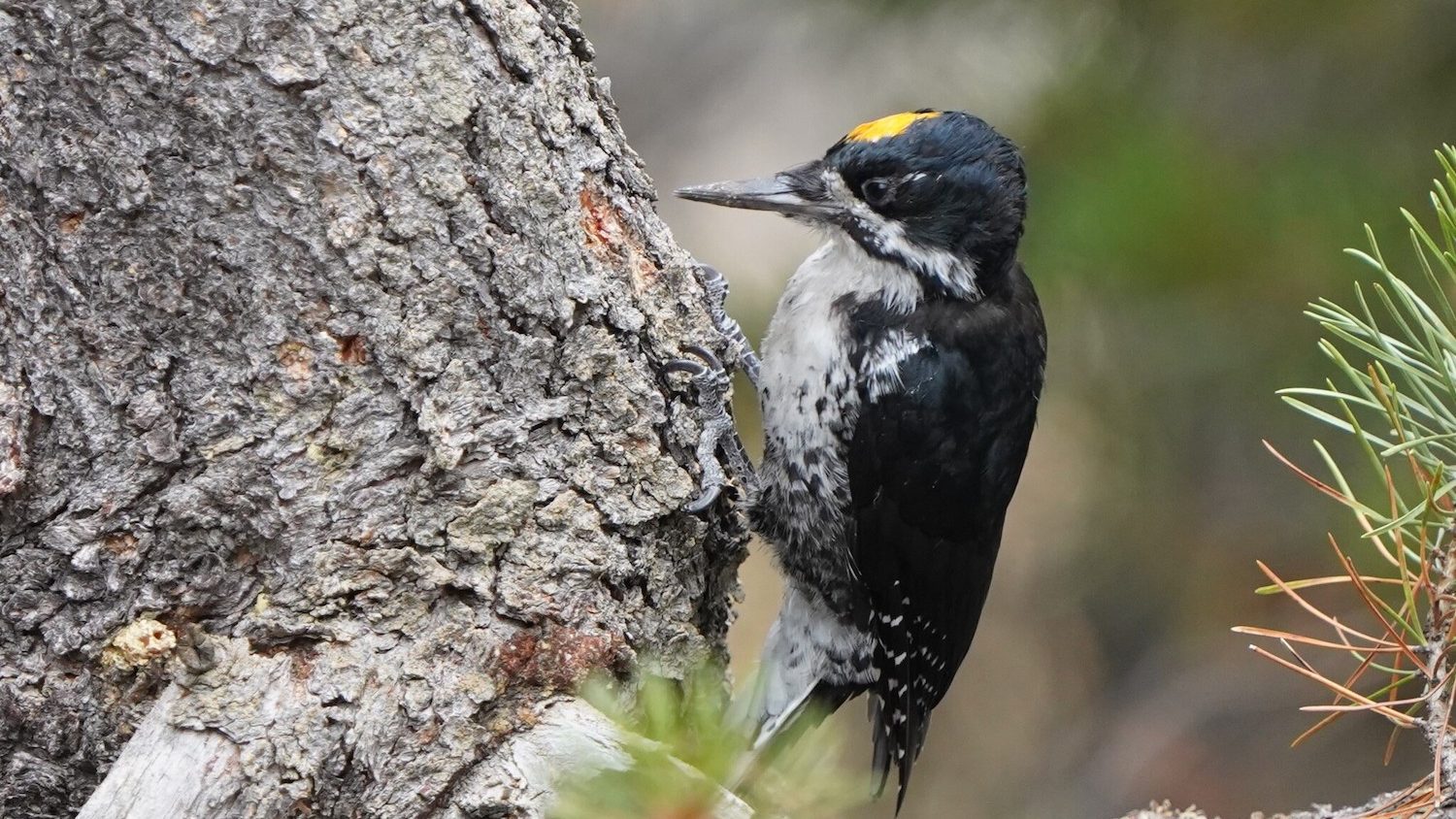
Follow the Burn
A year ago, the 10,000-acre Valley Fire raged across the Boise Foothills. It was a stressful day for our family, as it burned within 500 feet of our neighborhood. Luckily no homes were lost, but it scorched a lot of the adjacent Boise River Wildlife Management Area.
Much of this state-protected area was once sagebrush habitat. Sagebrush is not adapted to frequent fires. Invasive cheatgrass is. With each fire, native vegetation decreases and more of the hills become a cheatgrass monoculture. It’s a destructive cycle that’s difficult to reverse.
The foothills transition from the arid lands of southern Idaho to ponderosa pine forest. On high foothills ridges, groves of ponderosa pines signal this habitat change. Some of these ridges burned in the Valley Fire, too. And these areas, it turns out, have become a woodpecker haven.
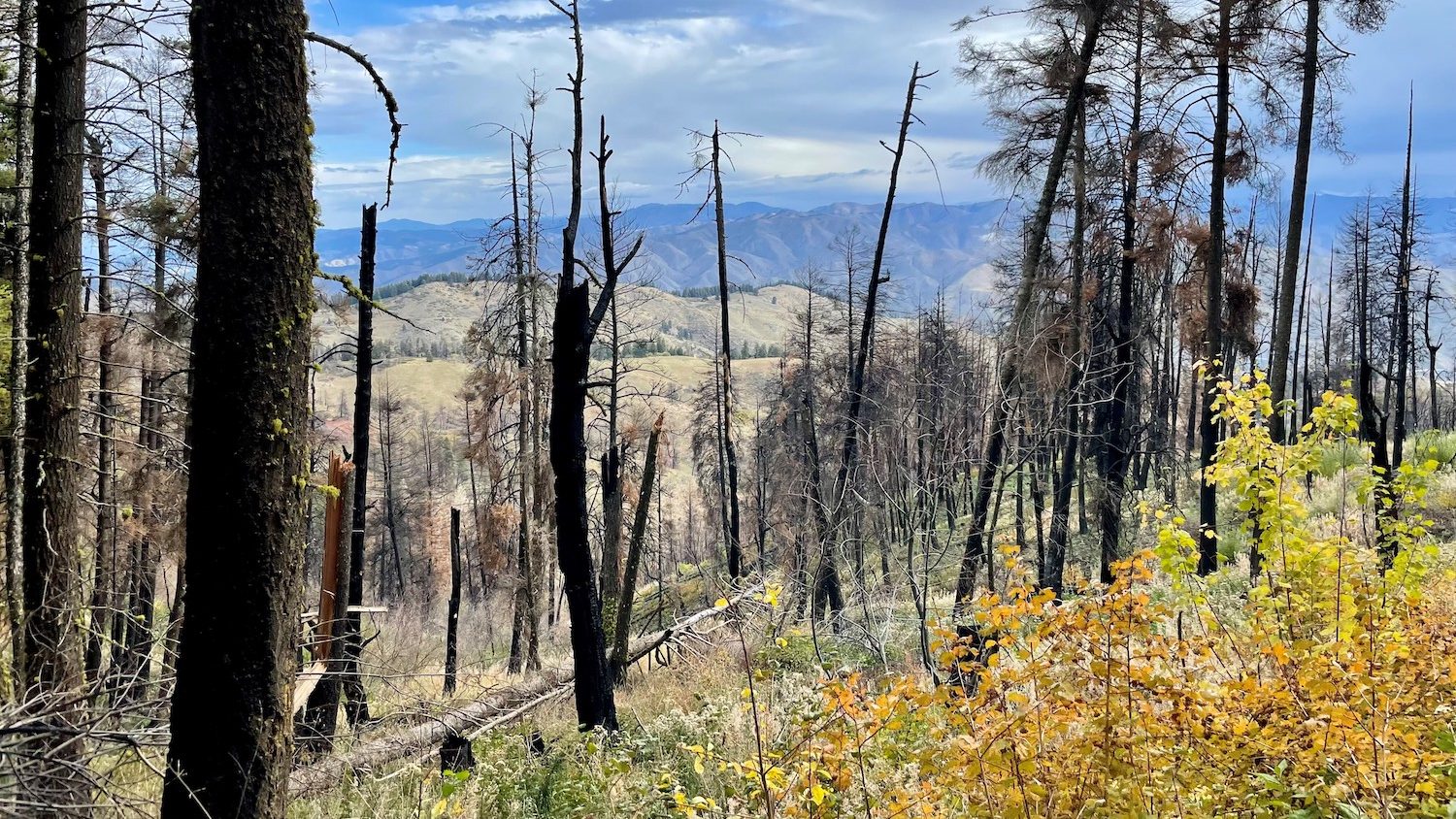
The black-backed woodpecker is a species that follows the burn. After a fire, woodpeckers colonize the burned area and feed on the wood-boring beetles in the blackened and dying trees. Some believe the woodpeckers will spend the rest of their lives there, a period of about 8 years. They will breed and raise chicks, who will fly off to colonize a more recently burned fire.
National forest fires can cover hundreds of thousands of acres, so pinpointing specific areas occupied by black-backed woodpeckers can be tough. In the foothills, the ponderosa pine groves are often just a few acres scattered amongst sagebrush and aspens. Searching the charred trunks left by the Valley Fire offered an excellent chance to add a new woodpecker species to my life list and hopefully observe them up close.
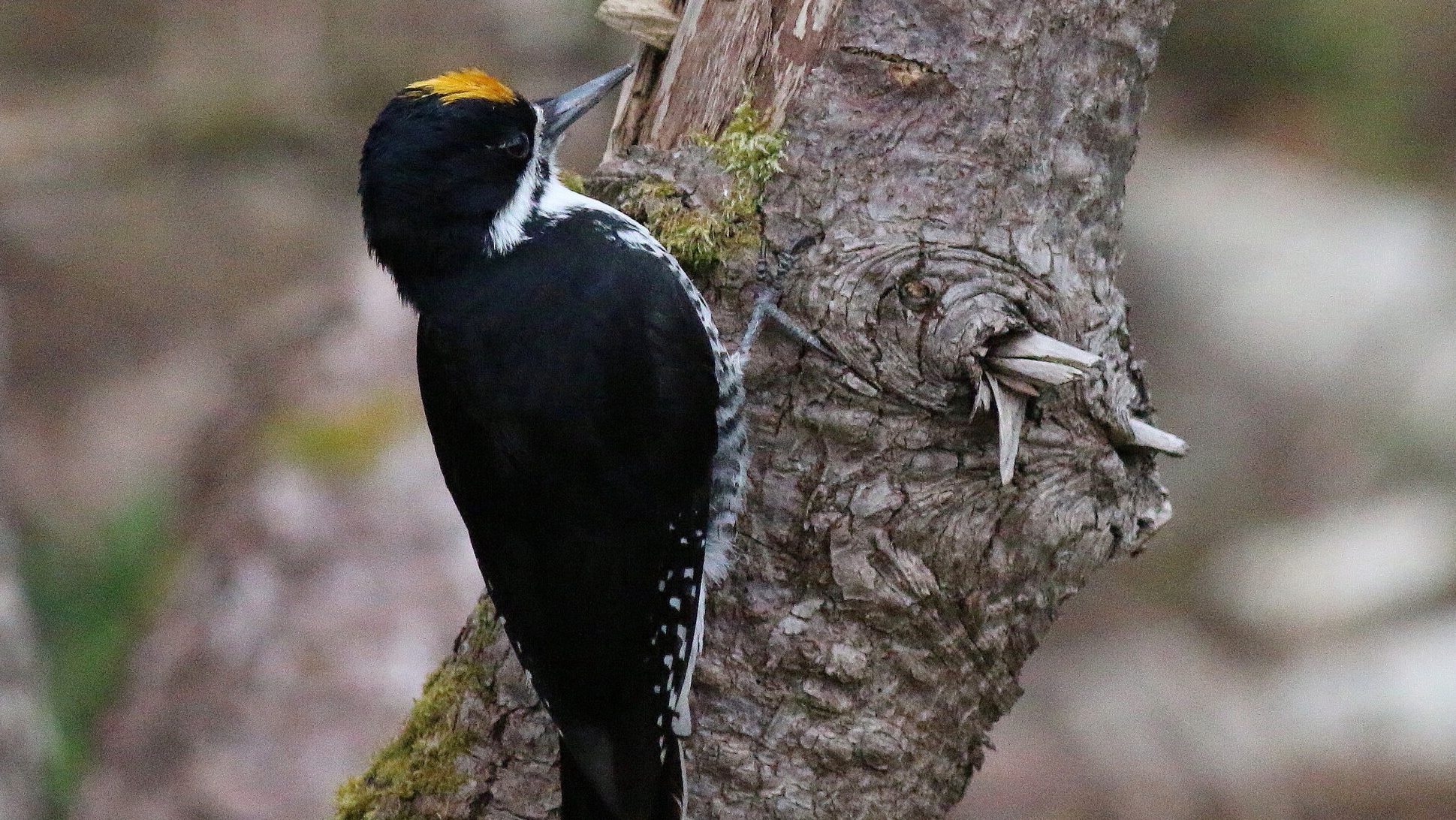
Woodpecker Quest
On a recent October morning, almost a year to the day after the Valley Fire had us scrambling to leave our home, I drove up to one of the highest-elevation points in the Boise River Wildlife Management Area.
In the lower hills, the charred remains of old sagebrush stood as reminders of the ecological damage. The gravel road through the wildlife management area is only a few miles, but the deeply-rutted dirt road made slow going. Finally, I arrived at the gate near the high point.
This area is run by the Intermountain Bird Observatory, a program of Boise State University and Nature Conservancy partner. Each fall, migrating birds funnel through this ridge before they begin their long journey across the high desert. Faculty, students and volunteers net and band migrating raptors, songbirds and owls as they pass through.
The Valley Fire was particularly damaging – and terrifying – for the Intermountain Bird Observatory. Banding crews and a school group staying overnight had to evacuate in the early morning hours, at times driving by walls of flame on either side of the dirt road. Much of the camp, a hawk-banding blind, research equipment and more were lost in the fire, and the station had to close for the rest of the year. Fortunately, it was able to reopen for the 2025 season.
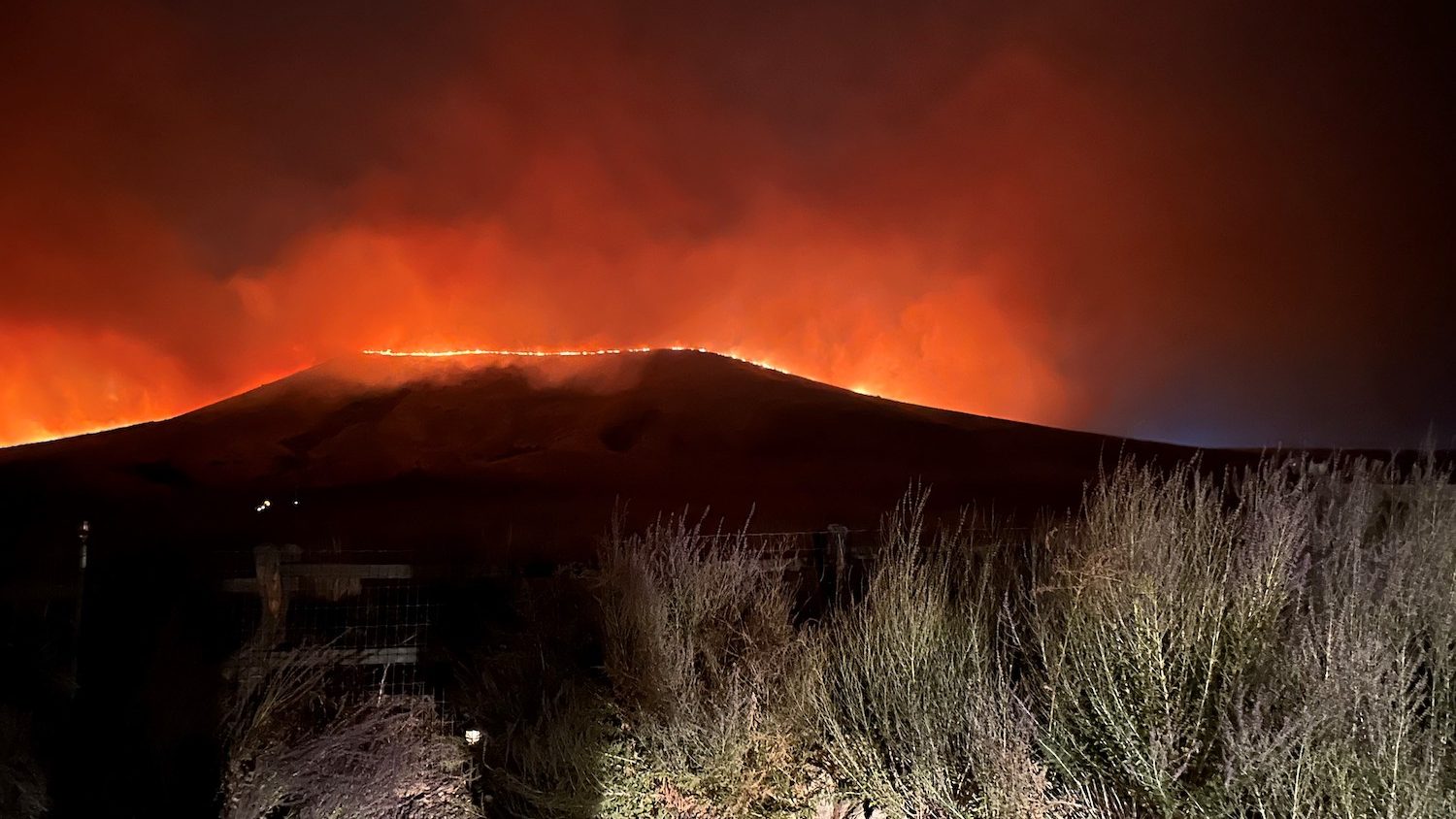
As I approached the camp, eight students were gathering and checking equipment for a day of bird banding. They saw me and waved. “Here to do some birding?” one of them called out.
I replied that I had heard there was a black-backed woodpecker around.
“There’s more than one,” he said. “Just follow this ridge and turn right at the jeep track that leads into the burned area. You’ll hear them.”
I eagerly headed up the closed road that followed the ridgeline. I arrived at another gate. The jeep trail? I followed it and soon found myself in a patch of burned pine trees. I looked around, curious at the burn pattern. Acres of trees showed signs of burning, but it was not uniform. I pondered the wind patterns that would have scorched some trees but spared others.
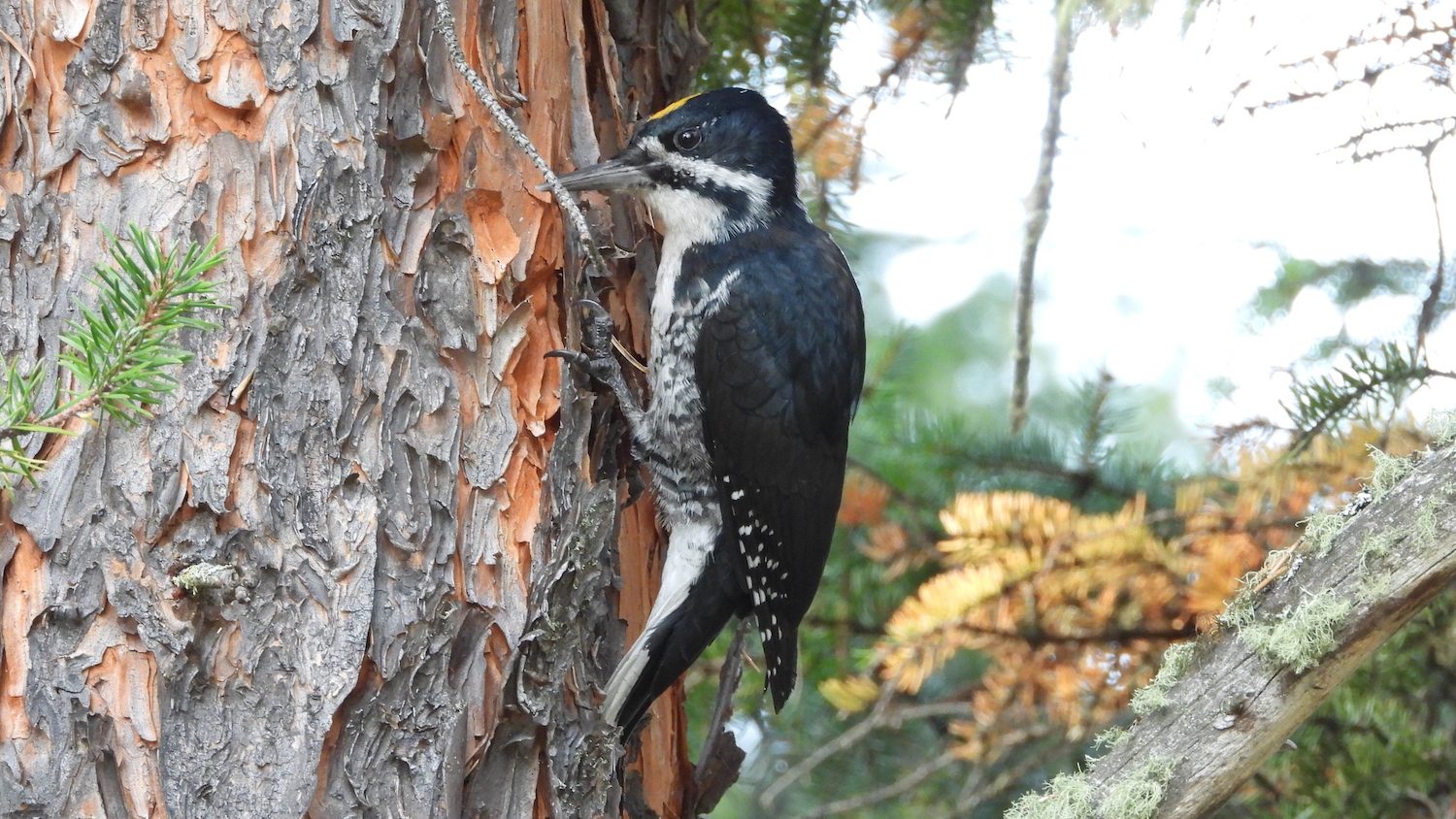
It turns out, research has found this mosaic of burning—what one paper calls “pyrodiversity”– is ideal black-backed woodpecker habitat. They prefer a mix of burned and unburned trees for nesting.
I stopped and listened, and took a few steps. A rapid hammering, almost shockingly loud, suddenly echoed through the woods. Once again I was a kid again, sneaking through the hardwood forests hoping to catch a glimpse of a woodpecker.
I realized that this species might be more difficult to see than the large pileated woodpeckers of my youth. The black-backed woodpecker has the familiar black-and-white checkering of many woodpeckers, but its overall feather tone is a dark charcoal. This helps it blend in with the burned trees.
I saw movement in the trees and through the binoculars saw black-and-white checkering. I could tell immediately that the white was too bright. A hairy woodpecker. This species is quite common in Idaho – I see them in my backyard – but I still enjoyed the chance to observe it foraging.
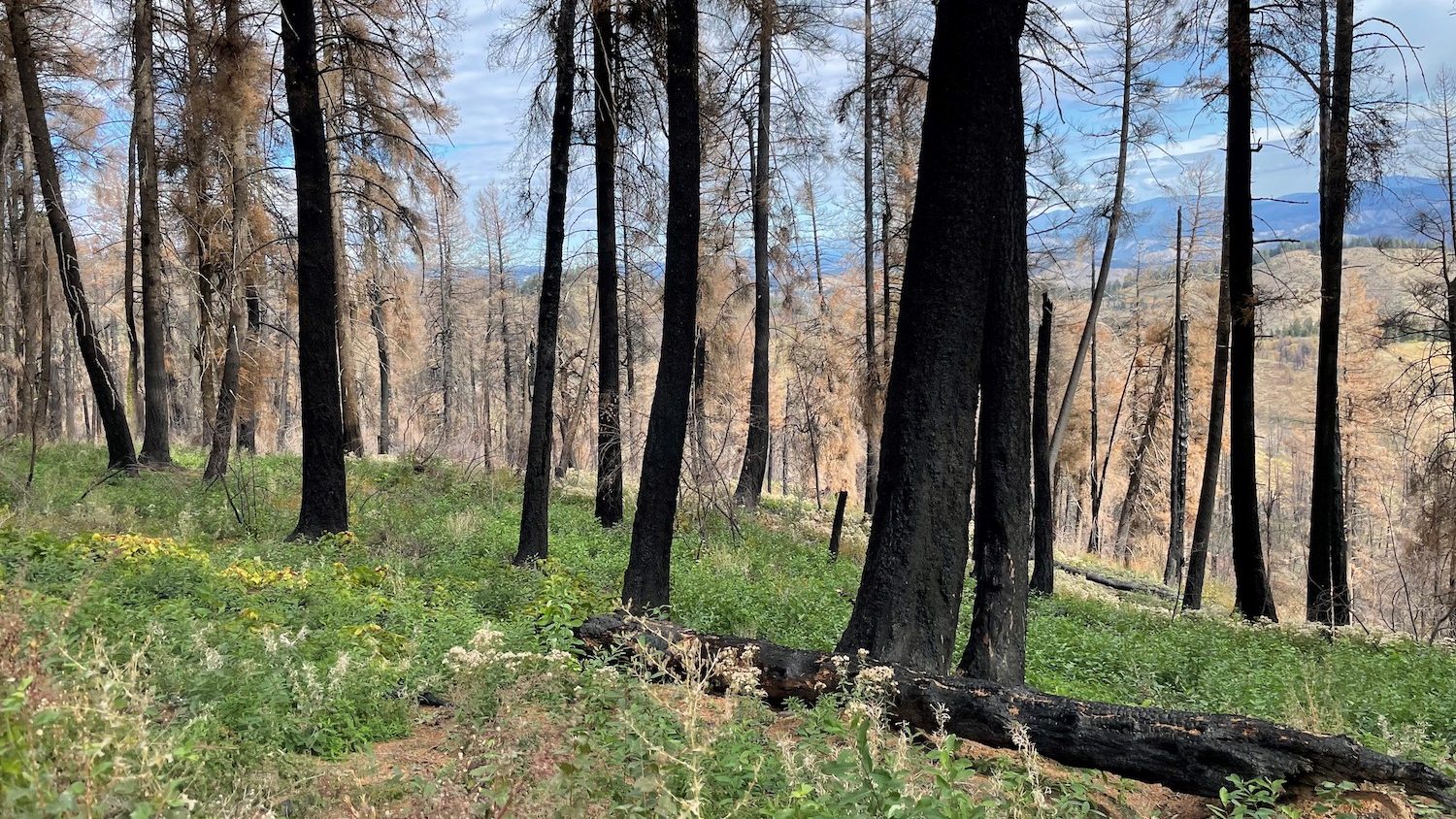
It soon became apparent that while the fire had many negative ecological and human impacts, it created a bonanza for woodpeckers. I could hear hammering from multiple directions. It created the birding equivalent of that old game “whack-a-mole.” I’d hear the rat-tat-tat, head towards it, then suddenly hear more hammering coming from another direction. I’d chase the new sound, convinced it was closer, only to be diverted again.
It can be surprisingly difficult to pinpoint a sound amongst the snarl of dead branches of a recently burned forest. I decided to quit running and just sit quietly and watch.
Within a couple of minutes, a woodpecker landed on a tree nearby. I saw the charcoal coloration so typical of a female black-backed woodpecker. This species has three toes, two forward and one back. As the American Bird Conservancy notes, “The absence of a back toe allows this bird to pivot farther back while preparing to hammer at a tree trunk, making the ensuing blows more forceful.”
Indeed, this woodpecker began vigorously pecking at the burned tree, sending bark chips flying. I never fail to get a sympathy headache while watching a woodpecker at work. An oft-repeated claim is that woodpeckers have shock-absorbent skulls, but that turns out to not be reality. More recent research has found that it’s just that the birds have a smaller size and smaller brain than humans.
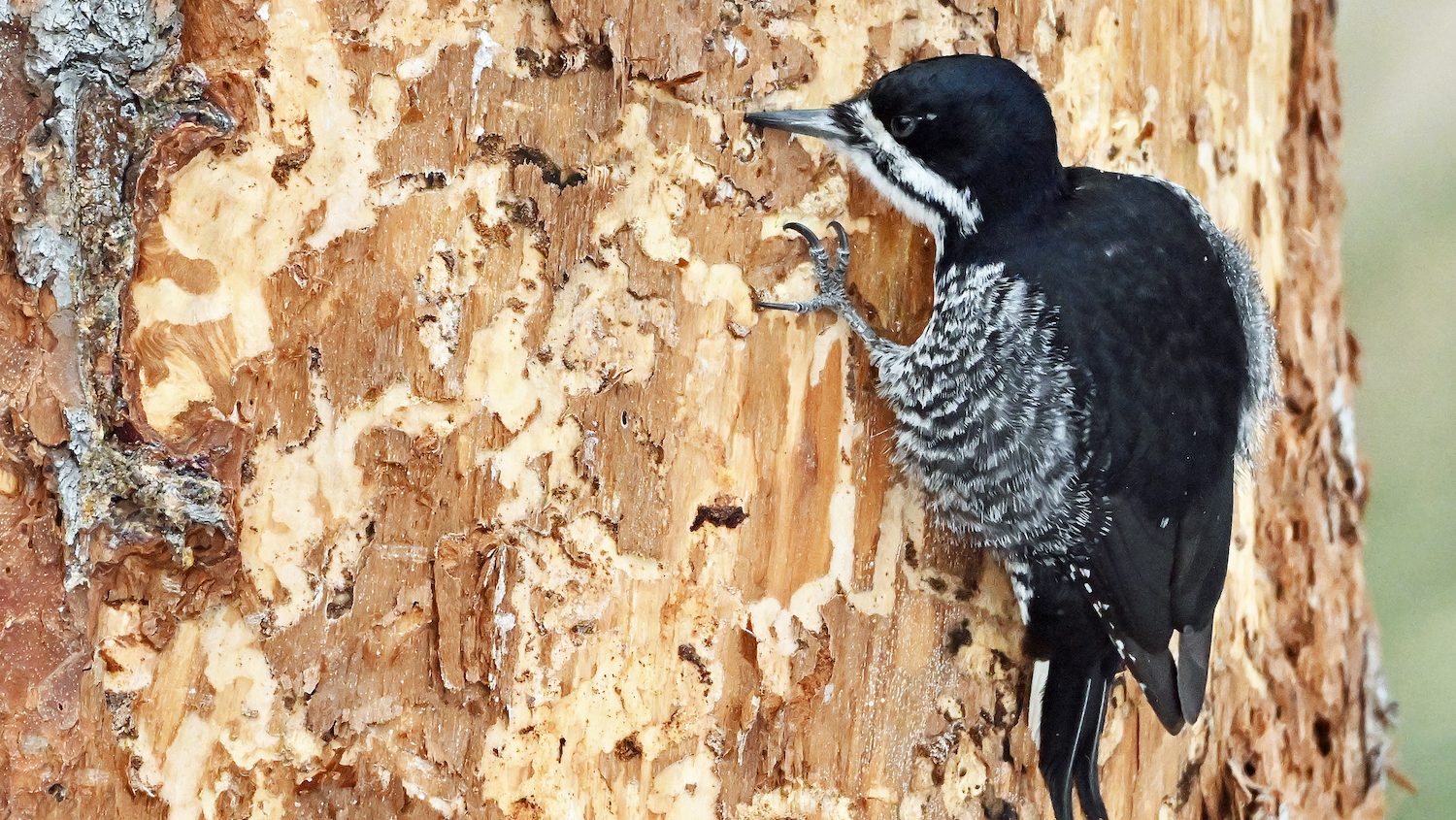
“Smaller animals can withstand higher decelerations. Think about a fly that hits a window and then just flies back again,” according to Sam Van Wassenbergh, a biologist at the University of Antwerp, told Smithsonian Magazine.
Up close, it’s an enjoyable bird spectacle. Soon another black-backed woodpecker landed nearby, and I could see another in the distance. This is the birding I most enjoy: searching for a specific species and then taking time to observe its habits.
The hairy and black-backed woodpeckers are two of the first birds to recolonize burned areas. They will feed on the wood-boring beetles and also excavate nest holes. These holes in turn will eventually be used by other birds.
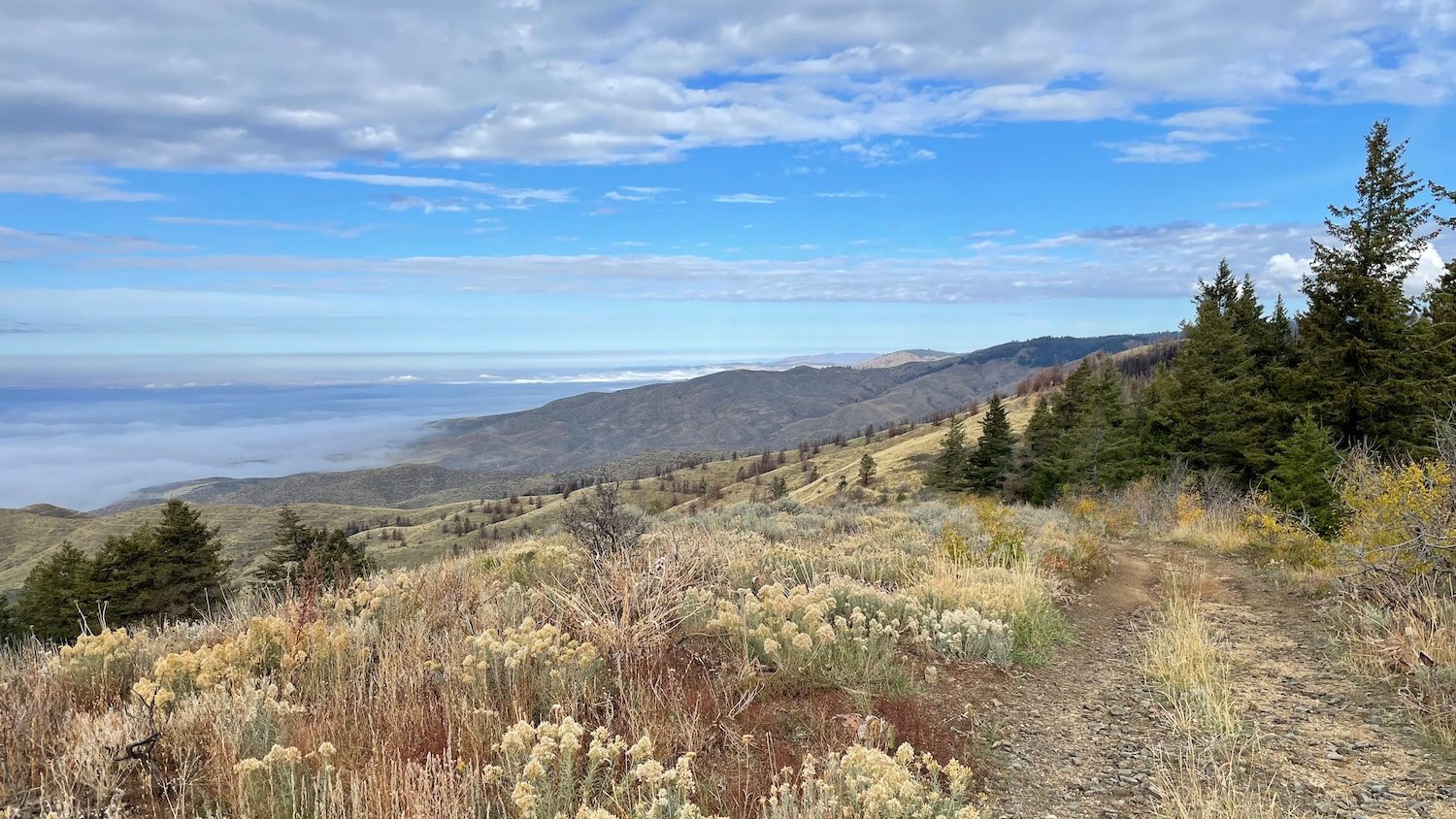
Birders love following rarities that show up in unusual places. Often, these are species that deviate from their migratory paths. That means the bird may move on rather quickly, creating a sense of urgency.
These black-backed woodpeckers have drawn quite a few local birders, but in all likelihood, they’ll be around for several years. Come spring, they’ll hatch a new generation of woodpeckers.
The Valley Fire created a very stressful and chaotic day for me and my family, and many other foothills neighbors. The loss of sagebrush habitat is real and damaging for a long list of wildlife species. But the natural world can be filled with surprises. In this wooded grove I can find hope by following the woodpeckers that follow the burn.
